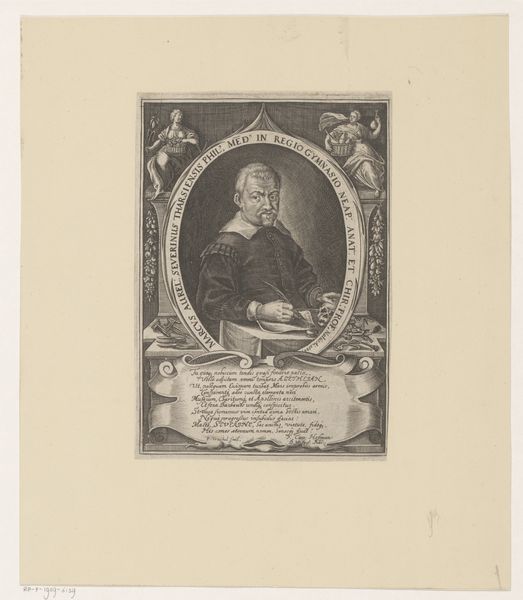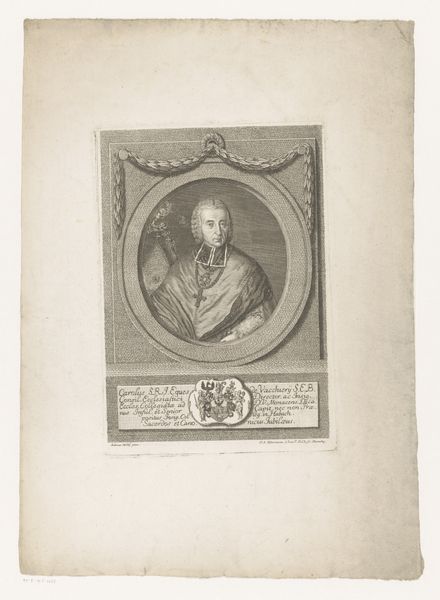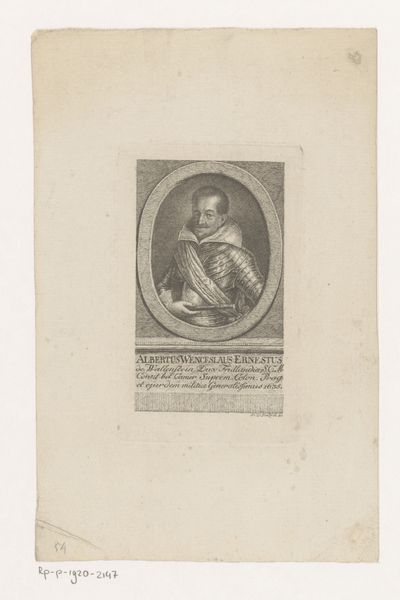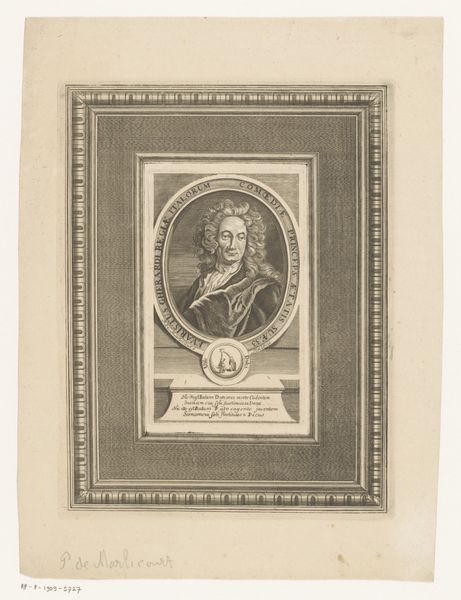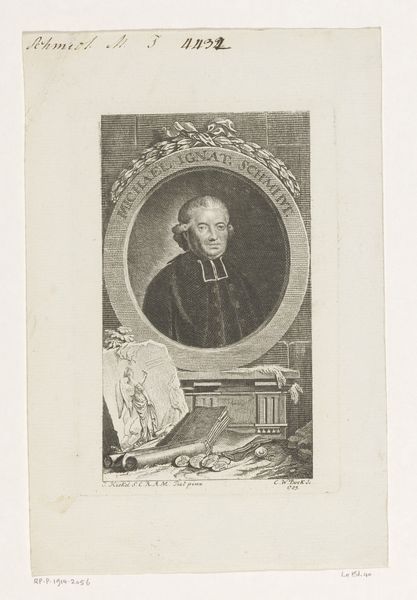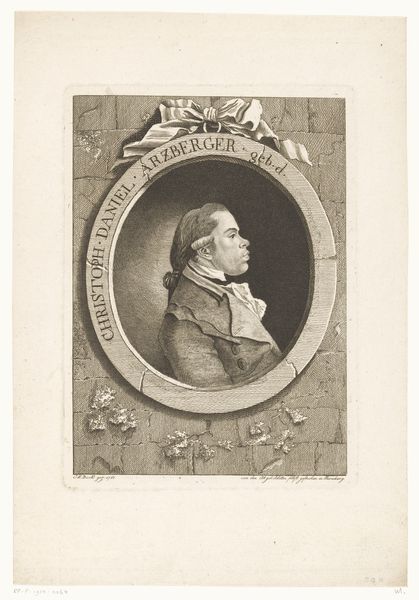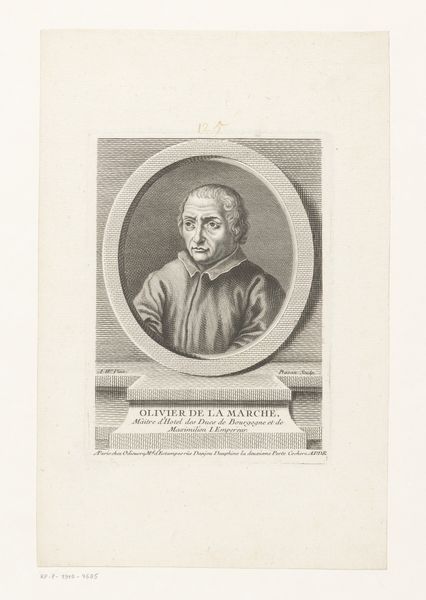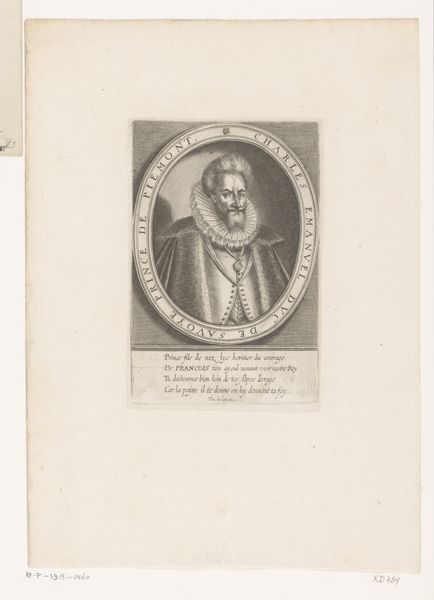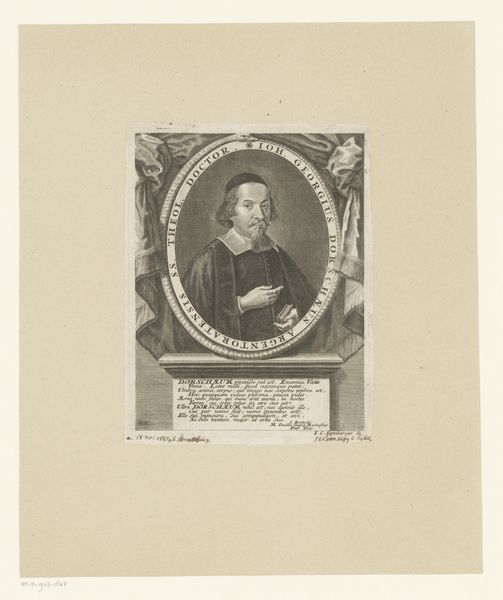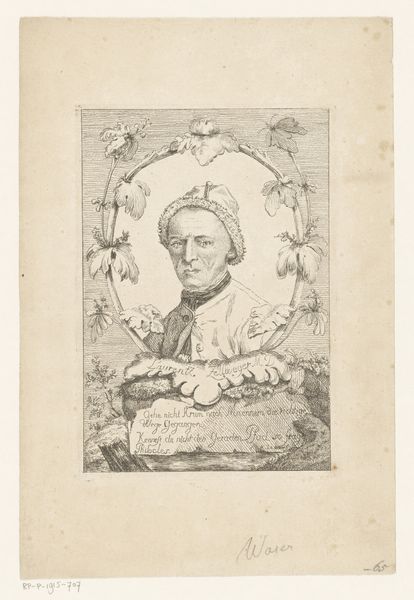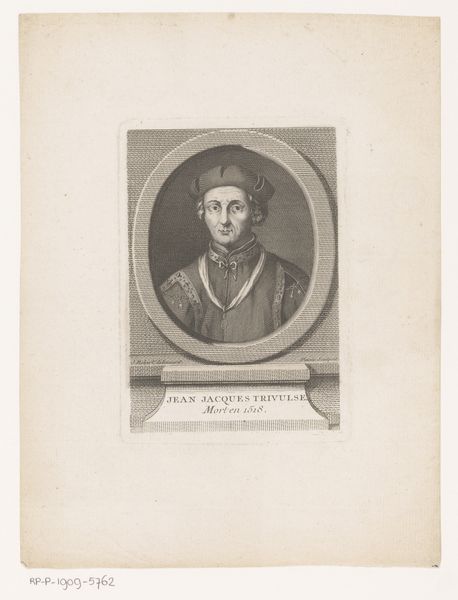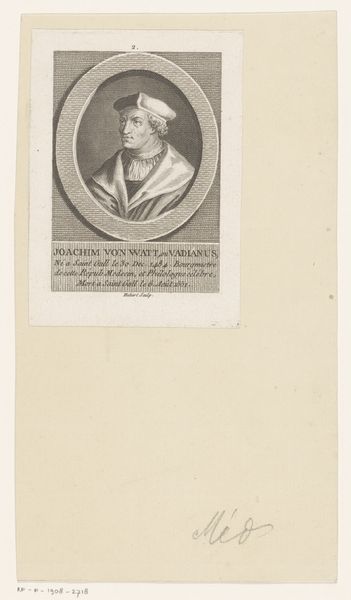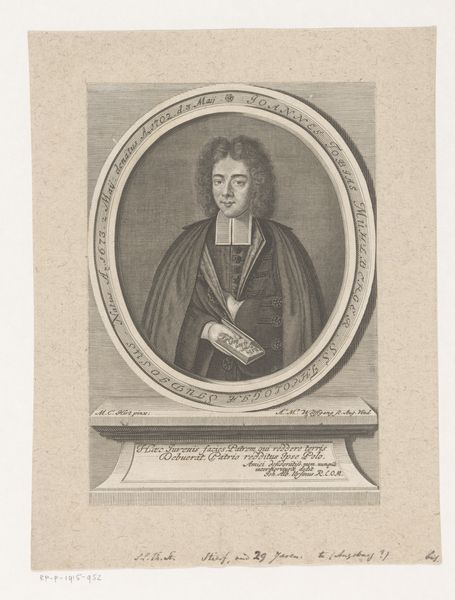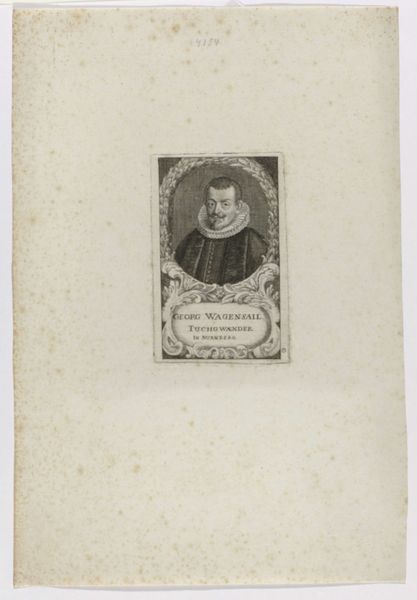
print, engraving
#
portrait
#
baroque
# print
#
old engraving style
#
figuration
#
history-painting
#
engraving
Dimensions: height 221 mm, width 184 mm
Copyright: Rijks Museum: Open Domain
Curator: We're looking at "Portret van Martin Luther in medaillon," a print created sometime between 1600 and 1650 by G. Chotard. It is an engraving, very much in the Baroque style, with a portrait of Martin Luther inside of a heavily decorated frame and with a lengthy text block below the portrait. Editor: My first impression is the incredible detail in the engraving. The hatching and cross-hatching create such a sense of depth and shadow. I am really noticing the density of detail of Luther's garments, as well as the floral details adorning the medallion frame. Curator: The details are really the point, aren't they? We must see this work as embedded in a time of enormous upheaval, where Luther represented a radical challenge to the established church. The details—from the lettering of his name and accomplishments encircling the portrait to his dignified clothing—become tools for representing, disseminating, and solidifying his legacy in a moment of immense societal transformation. The text block below the portrait gives additional support for Luther's beliefs. Editor: And yet, looking at the pure artistry of the engraving, consider how the use of line and texture serve to ennoble the subject. Look at the way the light seems to catch on the folds of his garments, lending him an almost sculptural presence within the two-dimensional plane. Even the weight and contrast of the font in the Latin inscription lends a sense of authority to the image. Curator: Absolutely, the medium itself elevates the message. Print culture played a key role in disseminating Reformation ideas; prints made Luther and his arguments accessible across different communities, creating a visual culture of Protestantism that supported, reinforced, and spread very specific perspectives. Editor: In essence, the print uses artistic form to validate Luther and his ideals. The craftsmanship isn't merely decorative but becomes essential to solidifying his image and cause. Curator: Right. Examining the material, like the engraving here, reveals its complex engagement within historical and political debates of the era. Editor: The composition and technique really enhance Luther's significance as an emblem. I appreciate understanding this print within the context of his larger impact on European history.
Comments
No comments
Be the first to comment and join the conversation on the ultimate creative platform.
